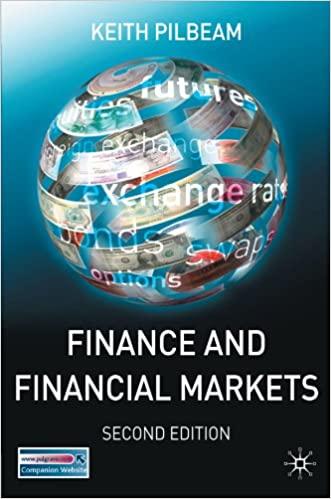Answered step by step
Verified Expert Solution
Question
1 Approved Answer
My textbook included the following explanation for calculating rate of change in a given exchange rate over a discrete period, and I'm a bit rusty
My textbook included the following explanation for calculating rate of change in a given exchange rate over a discrete period, and I'm a bit rusty and I couldnt follow the very last leg of the simplification, highlighted in blue. Could you explain how they got from the second-to-last equation pictured to the last one? And then explain how everything ties into that paragraph immediately below that talks about the different denominators?
The fact that these rates of appreciation and depreciation are not the same causes some confusion. The explanation for the difference begins with the observation that the exchange rate quoted in direct terms from the US perspective is the reciprocal (inverse) of the exchange rate quoted in in- direct terms. Let St,$/) be the dollar-pound exchange rate at time t. Then, the rate of appreciation of the pound relative to the dollar is Et+1,/S) - Et,/s) Et,/5) If we want to find the rate of appreciation of the dollar relative to the pound, we must consider the indirect quotes. Let us denote these exchange rates with a different symbol, Et, /8). Then, the rate of appreciation of the dollar relative to the pound is [1/(t+1,8/)] - [1/(t,$/)] [1/(1,5/)] But, by definition, the indirect and direct quotes are each other's reciprocal, Sct,$/) -1/[&t./$). Hence, the s(t,$/E) s(t.S/E) - S(1+1,S/E) S(+1,S/E) rate of appreciation of the dollar relative to the pound can be rewritten as S(t+1,S/E) If we multiply the nu merator and the denominator of the rate of appreciation of the dollar by S68/), we find S(t+1,S/E) - S(t.S/E) S(t.s/) Hence, the numerator in the rate of appreciation of the dollar is the negative of the numerator in the rate of appreciation of the pound, but the de nominators are different. One uses the exchange rate at time tand the other uses the exchange rate at time + 1 While the distinction in terminology (that appreciation or depreciation refers to the currency in the denominator of the exchange rate) may seem like little more than an annoying and potentially confusing curiosity, the different descriptions are sometimes used for political purposes which makes the distinction important to understand. In Greece, before the advent of the euro, for example, different newspapers tended to de Location 2000 of 3603 MacBook Pro 00 49 255 888 25 BO 12 7 9 They're trying to explain why the rate of change for an appreciated currency is different than the rate of change of the currency it appreciated against. 

Step by Step Solution
There are 3 Steps involved in it
Step: 1

Get Instant Access to Expert-Tailored Solutions
See step-by-step solutions with expert insights and AI powered tools for academic success
Step: 2

Step: 3

Ace Your Homework with AI
Get the answers you need in no time with our AI-driven, step-by-step assistance
Get Started


